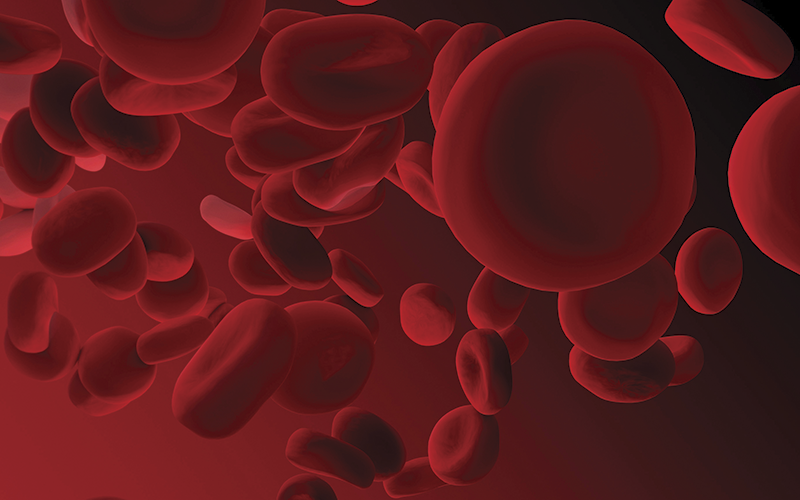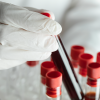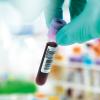Jan Frayne, a Reader in Biochemistry from the University of Bristol, discusses her cutting-edge work in manufacturing red blood cells.

“Previous approaches to producing red blood cells have relied on various sources of stem cells, which can only presently produce very limited quantities,” says Jan Frayne. “By taking an alternative approach we have generated the first human immortalised adult erythroid line and, in doing so, have demonstrated a feasible way to sustainably manufacture red cells for clinical use from in vitro culture.”
She adds: “Globally, there is a need for an alternative red cell product. Cultured red blood cells have advantages over donor blood, such as reduced risk of infectious disease transmission.”
Jan is discussing her work as part of a pioneering team at the University of Bristol that has managed to develop a robust and reproducible technique that allows the production of immortalised erythroid cell lines from adult stem cells. These cells can be cultured indefinitely, allowing larger-scale production, before they are differentiated into mature red blood cells.
Who is it for?
The team has published a paper in the journal Nature Communications, which states: “Blood shortage is an important healthcare problem globally, anticipated to become more problematic as people live longer and donor numbers dwindle. There is, therefore, the need for an alternative red cell product.”
Does this work mean that an alternative has now been found? No, it’s not that simple, Jan tells The Biomedical Scientist. “One thing I must stress is that this is absolutely not an attempt to replace blood donors.
We don’t want anyone to think they don’t need to donate.
“This is for patients who can’t get a good enough match for their blood. There are people who will not be able to find a 100% match and if they require regular blood transfusions, that can be a problem. This is aimed at those patients with very specialised needs and those with sickle cell disease.”
What did they do?
Current techniques for the in vitro generation of red blood cells do not provide a sustainable supply and the systems using pluripotent stem cells as progenitors do not generate viable red cells. The approach from Jan and her team differs in that they immortalise early adult erythroblasts, generating a stable line, which provides a continuous supply of red cells.
The immortalised cells differentiate efficiently into mature, functional reticulocytes that can be isolated by filtration. The cells divide every 20 hours and Jan says that, in theory, there is no reason why they should not continue doing so forever.
The work, funded by the Department of Health, the Wellcome Trust, BrosSynBio, the National Institute for Health Research Blood and Transplant Unit and NHS Blood and Transplant, has understandably generated a lot of media interest.
What do the public think?
“We’ve been inundated with interview requests,” says Jan. “I was surprised by the fact they came from all over the world. But I guess that if you are doing research that involves materials people have heard of, like red blood cells, and then you’ve got something that sounds exciting, like stem cells, then people can relate to the work and they are interested.”
The team has also been contacted by both curious and desperate members of the public. The requests range from those asking if the technique can be used now to help a seriously ill relative, to queries on whether Jehovah’s Witnesses – who believe that the Bible prohibits ingesting blood – would be able to have transfusions of this blood.
The answer to the former question is that it will be at least five years, maybe 10, before this blood will be available in a clinical setting. To the latter, it is a “no”, as while some media reports have misleadingly labelled the blood “artificial”, Jan stresses that “it is blood that is being made from the same cells created naturally in the body, so this is blood that is being grown, rather than artificial created. That’s something we’ve got to be very careful to explain”.
Public perception is an aspect of the work that is being very carefully managed – this is particularly important due to the public funding the study has received. “As part of the research we speak to patient groups and members of the public and ensure that they are involved,” says Jan. “They are helping us shape how things are explained to ensure that the public can understand what we are doing.”
What next?
The technique is currently undergoing a small-scale trial with volunteers and, as long as this goes well, it is expected to escalate to a full trial soon. “The short-term aim is to get a match for those people with clinical need. We want to get a better product to those patients,” says Jan.
Cost may also be a potential barrier. “The reason that this is so expensive at the moment is that the culture medium we use is expensive. If we can buy that at a cheaper rate, then the technique will be cheaper. This is currently aimed to be a life-saving technique, not something for the general public. However, whenever anything is new it is always expensive, but then it comes down in price.”
Does Jan believe that if the cost comes down enough, in the future, all blood transfusions will be carried out using lab-grown blood?
“It’s not an impossibility,” she says.
“We have an ageing population that will carry on increasing, meaning that donors may well be a problem in the future. It’s certainly not happening anytime soon, but one day, yes, this may be the main blood transfusion supply.”
All about Jan
- Jan obtained her first degree from Nottingham University and her PhD from the University of Bristol.
- Her early research was in developmental biology.
- She moved to the Department of Biochemistry at the University of Bristol on a post-doctoral position.
- She developed skills in molecular biology, then moved on to erythropoiesis.
- Her main research focus is now the molecular analysis of erythropoiesis in vitro, and the development of proteomic approaches to study this process.
- She studies the development of red blood cells in vitro from sources including adult, cord and IPBS cells.




